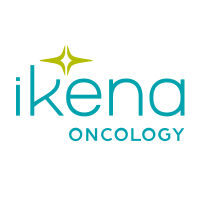预约演示
更新于:2025-05-07
MEK x Raf kinase
更新于:2025-05-07
基本信息
相关靶点 |
关联
8
项与 MEK x Raf kinase 相关的药物作用机制 BRAF抑制剂 [+2] |
在研适应症 |
最高研发阶段申请上市 |
首次获批国家/地区- |
首次获批日期1800-01-20 |
作用机制 MEK抑制剂 [+1] |
在研适应症 |
非在研适应症- |
最高研发阶段临床1期 |
首次获批国家/地区- |
首次获批日期1800-01-20 |
作用机制 MAPKs抑制剂 [+3] |
非在研适应症- |
最高研发阶段临床1期 |
首次获批国家/地区- |
首次获批日期1800-01-20 |
34
项与 MEK x Raf kinase 相关的临床试验NCT06369259
Open-label Phase 2 Study of Avutometinib (RAF/MEK Clamp) in Combination With Defactinib (FAK Inhibitor) and Cetuximab in Patients With Unresectable, Anti-EGFR-Refractory Advanced Colorectal Cancer
To learn if avutometinib in combination with defactinib and cetuximab can help to control unresectable, anti-EGFR-refractory, advanced colorectal cancer.
开始日期2025-02-24 |
100 项与 MEK x Raf kinase 相关的临床结果
登录后查看更多信息
100 项与 MEK x Raf kinase 相关的转化医学
登录后查看更多信息
0 项与 MEK x Raf kinase 相关的专利(医药)
登录后查看更多信息
7,133
项与 MEK x Raf kinase 相关的文献(医药)2025-12-01·Molecular Biology Reports
Role of signaling pathways in endometrial cancer
Review
作者: Yadav, Ritu ; Chauhan, Meenakshi B ; Balhara, Nikita
2025-07-01·Life Sciences
A novel tubulin inhibitor, No.07, shows anti-cancer and anti-metastatic effects in colon cancer and tumoroids
Article
作者: Kim, Bo Yeon ; Choi, Yerim ; Hwang, Gwi-Ja ; Soung, Nak-Kyun ; Ryoo, In-Ja ; Han, Junyeol ; Han, Ho Jin ; Kim, Sumin
2025-07-01·Cellular Signalling
The KSR1/MEK/ERK signaling pathway promotes the progression of intrauterine adhesions
Article
作者: Huang, Xiyue ; Wu, Jiangling ; Yang, Xiao ; Chen, Qiuhong ; Wang, Jia ; Wu, Shasha ; Sun, Congcong ; Zhang, Lulu ; Huang, Jinglin ; Zhang, Wenwen
624
项与 MEK x Raf kinase 相关的新闻(医药)2025-05-05
点上方蓝字“ioncology”关注我们,然后点右上角“…”菜单,选择“设为星标”ELCC 2025 微专辑扫描二维码可查看更多内容在2025年欧洲肺癌大会(ELCC)上,ESMO前任主席、瑞士洛桑大学医院肿瘤科主任Solange Peters教授以“双特异性抗体和T细胞衔接器:对抗免疫荒漠”为题发表专题报告。《肿瘤瞭望》就这些创新疗法及当前免疫治疗领域的热点问题对Peters教授进行了独家专访。请谈谈双特异性抗体和T细胞衔接器在改善肺癌治疗方面的潜力。Dr. Peters:双特异性抗体同时针对两个靶点,令人惊讶的是,其疗效竟然优于两种单抗联合使用。需要记住,双特异性抗体的定义很广泛,这类药物靶向两种肿瘤相关抗原,但大多靶向两个免疫检查点,通过抑制或刺激免疫反应发挥抗肿瘤作用。例如,双特异性抗体的两个靶点可能是PD-1/PD-L1与CTLA-4,可能是VEGF与PD-1。这是一种免疫反应的调节剂(刺激或抑制)。2025 ELCC发布了首批靶向PD-1和LAG-3两种通路的双特异性抗体的数据(摘要7MO:Tobemstomig/含铂化疗对比帕博利珠单抗/含铂化疗一线治疗局部晚期或转移性NSCLC患者的II期临床研究)。我们希望联合PD-1和LAG-3治疗,理想情况下是使用双特异性抗体,或使用两种药物分别治疗。但罗氏研发的双特异性抗体Tobemstomig联合化疗对比帕博利珠单抗/化疗是阴性结果,所以以上概念可能并不成立。 目前尚不清楚CTLA-4/PD-1双特异性抗体为何比CTLA4单抗联用PD-1单抗更有效,可能是同步靶向两个免疫检查点可以增强肿瘤内部的协同效应,从而有效整合免疫反应的各个组成部分(向肿瘤细胞抗原呈递的细胞、T细胞衔接器等),我们希望这种机制产生作用,但尚缺乏研究数据支持。T细胞衔接器是不同作用机制的药物,它通过结合CD3激活T细胞,促进其细胞增殖并分泌细胞因子。这是T细胞的启动过程。T细胞衔接器不依赖于预先存在的免疫反应。虽然T细胞衔接器可能引发一些副作用,例如细胞因子释放综合征(CRS)和免疫效应细胞相关神经毒性综合征(ICANS),但它为针对性治疗策略带来了巨大的希望,通过激活T细胞并招募免疫细胞大军来攻击肿瘤。制药行业正在针对这类药物进行大量研发,临床试验覆盖多种肿瘤和疾病不同阶段,其中200个双特异性抗体正在II期临床试验阶段。(上下滑动可查看)Dr. Peters: My name is Solange Peters. I am Director of Oncology at the University Hospital of Lausanne in Lausanne, Switzerland.First of all, it is quite surprising to see how a bispecific with two targets might potentially be more active than two drugs together. Remember, bispecifics define many things. You could target two tumor-associated antigens, but most of these bispecifics target two checkpoints, inhibitory or stimulatory. For example, PD-1 and PD-L1/CTLA4, VEGF/PD-1 – modulators of the immune response, stimulatory or not. Why does it work better to give a bispecific CTLA4/PD-1 compared to giving both drugs together? We still don’t know. We think that when you target two checkpoints, you may promote collaboration within the tumor to bring together components of the immune response – antigen presenting cells to tumor cells, and T-cell engagers in the immune response. We hope it will work. Do we have data? Yes and no. Today, we saw the first data on a bispecific targeting PD-1 and LAG-3, two pathways. We would like to combine them together, ideally as a bispecific or maybe one-by-one, but the bispecific from Roche has failed already with chemotherapy versus chemo/pembrolizumab. So, we think maybe the whole concept is not valid. T-cell engagers are completely different. They activate T-cells by binding onto CD3 making the cell proliferate and produce cytokines. It is a switching on of the T-cells. You don’t need a pre-existing immune response. There are some side effects like CRS (cytokine release syndrome) and some ICANS (immune effector cell-associated neurotoxicity syndrome), but it brings wonderful hope for a specifically targeted therapy. Activating T-cells creates an army of immune cells against the tumor. The amount of further developments by the pharmaceutical industry is huge. Across diseases and various phases of clinical trials, we currently have around 200 bispecifics in clinical trials in phase II.关于晚期非小细胞肺癌的免疫治疗,仍存在一些未解之谜。例如,对于伴有致癌驱动基因的晚期非小细胞肺癌治疗,是否应该排除免疫治疗?Dr. Peters:这个问题的核心在于明确免疫检查点抑制剂(ICI)在伴致癌驱动基因晚期非小细胞肺癌(NSCLC)中的有效性。首先,我们应该谨慎地看待已知信息(我们所知最多的是将EGFR和ALK阳性肺癌系统性地排除在免疫治疗之外),而EGFR和ALK两个靶点非常重要。ALK:免疫检查点抑制剂在ALK阳性肺癌中的活性非常低,也没有任何令人信服的疗效数据,我确实不会为这类患者开免疫疗法的处方。RAF1和MEK相比ALK的研究更少,这类肺癌的特点也是免疫原性极低、PD-L1表达低以及肿瘤突变负荷(TMB)低。与ALK家族一样,RAF1和MEK也不适合免疫治疗。EGFR:免疫治疗是否适用于EGFR突变型肺癌,并非非黑即白的问题。来自中国台湾的Gee-Chen Chang教授一直告诉我,免疫疗法对EGFR突变体有一定的治疗活性,可能需要将其留到后线治疗与化疗/抗血管生成药物联用。当免疫疗法与化疗联用不足以产生效果时,联用抗血管生成药物可提升疗效并产生获益(例如IMpower150、ATTLAS和HARMONi-8研究)。因此,当免疫疗法联用其他疗法(抗血管生成药物,未来可能联用双特异性抗体或T细胞衔接器)时,在EGFR突变型肺癌治疗中仍有应用价值。我认为免疫疗法在这类患者中是有发展空间的。其他靶点:KRAS G12C变异对免疫疗法非常敏感。如果患者是吸烟者,且携带BRAF和MET外显子14,患者可能也会对免疫治疗敏感,而非吸烟者则不那么敏感。因此,在伴有EGFR/ALK以外的其他致癌驱动基因时,免疫疗法可能在一线治疗中没有用武之地,但临床医生需要与医疗机构和患者进行知情讨论,因为目前尚不清楚免疫治疗能否产生影响。(上下滑动可查看)Dr. Peters: The question is how much is immunotherapy valid in the oncogenic addiction setting of advanced NSCLC. First of all, I think you need to be very cautious about what we know. What we know the most is the systematic exclusion of EGFR and ALK. These are the two important targets. For ALK, we have seen very little activity and haven’t seen any convincing data that immune checkpoints are valid in ALK-positive disease. I would really not prescribe in this disease setting. Similar to ALK and even less studied, RAF1 and MEK are also diseases with very low immunogenicity, low PD-L1, low mutational burden. We know that with the ALK family, RAF1 and MEK are the same types of tumors, but EGFR is not so black and white. My colleague from Taiwan, Gee-Chen Chang keeps telling me that it has some activity in EGFR mutant, but you probably need to keep it in reserve for late lines in combination with chemo and probably antiangiogenics. When combining with chemo is not sufficient to make a difference, in IMpower150, in ATTLAS, in HARMONi-8, giving an anti-angiogenic gives rise to a benefit. So, there is room for immunotherapy in EGFR when you combine immunotherapy and something else, maybe an anti-angiogenic, or maybe another bispecific in the future, maybe T-cell engagers too. I think there is room in this setting. Remember that KRAS G12C is very sensitive to immunotherapy. When you are a smoker with BRAF and MET exon 14, you might be sensitive too, less for non-smokers. So, in other oncogenic settings, maybe not useful in frontline, but you need to have this informed discussion with your institution and your patient because it is not clear that it has no impact.晚期非小细胞肺癌患者何时可以或应该停止抗PD(L)-1药物治疗?免疫疗法的“最佳疗程”是多久?Dr. Peters:免疫治疗的停止时机仍存在争议。很多国家的患者别无选择,因为大多数晚期肺癌免疫治疗的临床试验通常设定2年为治疗期限,因此医疗报销到时停止,患者只能停药。然而,有些国家不考虑这个问题,可支付持续治疗的费用。KEYNOTE-024和KEYNOTE-189模拟了接受2年免疫治疗后停药的患者与继续治疗患者的长期结局。若肺癌完成2年免疫治疗后停药,病情得到控制,仍有超50%的患者会在后续3年内复发;如果对复发速度进行模拟,免疫停药后可能存在"复发加速"现象,因此疾病进展的风险会增加,这一现象值得临床医生与患者进行讨论。目前尚不清楚持续免疫治疗能否改变这些动力学数据,但可能性很高(50%是很高的概率)。虽然无法确定延长免疫治疗能否阻止上述不利情况,但医患共同决策很重要。基于个人经验,我的大多数患者更倾向持续治疗直到疾病进展,而非主动停药。(上下滑动可查看)Dr. Peters: The time to stop immunotherapy is a matter of debate. Basically, in many countries, you have no choice. Most of the trials stopped at three years, so reimbursement stops at three years. But some countries don’t look at it and can afford to continue. Otherwise, we don’t know. We simulated from the KEYNOTE-24/KEYNOTE-189 what would happen after stopping versus if you continued. If you stop at two years and the patient is controlled, more than 50% will relapse in the next three years. If you simulate the pace of relapse, it looks like an acceleration. When you stop, there is an acceleration in simulations, so an increased risk of progression. This is what you need to discuss with your patient. I don’t know if continuing will change these kinetics, but you need to know that there is a high probability (50% is a high probability). I don’t know that continuing would prevent it, but you can make that decision together. In my experience, most of my patients continue until they experience progression, but most of my patients don’t want to stop.在2025 ELCC报道的胸部肿瘤研究中,您认为哪些研究会对临床实践产生重大影响?Dr. Peters:我非常欣赏此次会议的内容,因为2025 ELCC展示的一系列II期临床试验为解决耐药和探索生物学机制提供了新机遇。2025 ELCC发布了一系列令人惊叹的靶向疗法研究数据,例如在KRAS抑制领域,我们获得了更多关于调节KRAS抑制的信息。2025 ELCC最重要的讨论是对于EGFR突变NSCLC患者,如何通过MARIPOSA方案延长生存期,尽管毒性增加带来挑战。此外,对于发生MET扩增(一种常见耐药机制)的患者,如何使用埃万妥单抗(amivantamab)靶向治疗来解决问题。我认为,EGFR突变NSCLC治疗正在重新定义,这非常重要。在瑞士,EGFR突变阳性肺癌的占比相对较低,但在亚洲这类患者约占一半,因此这一话题具有非常重要的临床意义。2025 ELCC发布的关键信息将重新定义EGFR突变NSCLC治疗,推动共识和指南的更新,进一步优化EGFR突变NSCLC的一线及后线治疗策略。(上下滑动可查看)Dr. Peters: This is a Congress that I like because they present some phase II trials, new opportunities for addressing resistance, of addressing biological questions. I think we have seen today an amazing range of targeted therapies. KRAS inhibition - how you can modulate KRAS inhibition. The most important debate we had at this meeting was how to prolong the life of EGFR mutated patients with the improvement in survival of MARIPOSA, although toxicity is a challenge. MET amplification – this is often encountered, and how to address it with targeted therapy with amivantamab. I think we are redefining these diseases, which is extremely important. I am from Switzerland where it is not so important, but this is half of the patients in Asia, so it is a hugely important topic. I think this meeting has been key in trying to redefine the journey of these patients with EGFR mutants. If I had to pick one key message, with redefinition, we need to work on consensus and guidelines, what to do first, and what to do next in EGFR mutant NSCLC.《肿瘤瞭望》在ELCC现场报道(来源:《肿瘤瞭望》编辑部)声 明凡署名原创的文章版权属《肿瘤瞭望》所有,欢迎分享、转载。本文仅供医疗卫生专业人士了解最新医药资讯参考使用,不代表本平台观点。该等信息不能以任何方式取代专业的医疗指导,也不应被视为诊疗建议,如果该信息被用于资讯以外的目的,本站及作者不承担相关责任。
免疫疗法临床终止
2025-04-30
·医药观澜
4月29日,中国国家药监局药品审评中心(CDE)官网最新公示,上海复星医药产业发展有限公司申报的FCN-159片拟纳入突破性治疗品种,针对适应症为儿童朗格汉斯组织细胞增生症(LCH)。公开资料显示,这是复星医药研发的创新型小分子化学药物芦沃美替尼(曾用名:复迈替尼)。该产品此前已经有两项适应症的上市申请先后被CDE受理,并纳入优先审评,分别用于治疗成人树突状细胞和组织细胞肿瘤,以及治疗2岁及2岁以上儿童1型神经纤维瘤病(NF1)相关的丛状神经纤维瘤(PN)。截图来源:CDE官网朗格汉斯细胞组织细胞增生症(LCH)是组织细胞肿瘤的亚型之一,已经被收录至《中国第一批罕见病目录》。组织细胞肿瘤是指起源于单核吞噬细胞系统或向单核吞噬细胞系统细胞分化的肿瘤。它是一种以MAPK信号通路激活为主要特征的克隆性血液系统肿瘤,目前手术治疗、放化疗、骨髓移植等治疗手段的疗效十分有限,患者预后仍然较差。MEK是MAPK信号通路的一个重要组成部分,具有促进细胞的生长、分化、增殖等活动的作用。肿瘤患者MEK的活性高度增强会使肿瘤细胞无限增殖和生长,在许多肿瘤的治疗中,通过抑制MEK的信号通路可以抑制RAF/MEK/ERK通路,有望抑制肿瘤的生长发展。因此,MEK被认为是一个非常重要的治疗癌症的靶点。MEK1/2抑制剂的作用机制是通过抑制MEK蛋白的活性,从而影响MAPK通路(丝裂原活化细胞外信号调节激酶),最终达到抑制肿瘤细胞增殖的效果;其还可以调节细胞周期蛋白和细胞凋亡相关蛋白的表达,诱导肿瘤细胞死亡。芦沃美替尼正是由复星医药自主研发的创新型MEK1/2抑制剂,拟主要用于晚期实体瘤、I型神经纤维瘤、组织细胞肿瘤、动静脉畸形等治疗。根据公开资料,芦沃美替尼用于治疗儿童朗格汉斯细胞组织细胞增生症已经于中国处于2期临床试验阶段。在2024年的欧洲血液病协会(EHA)年会上,研究人员公布了芦沃美替尼治疗成人组织细胞肿瘤的2期临床试验数据。在29例患者中, 独立评审委员会(IRC)和研究者根据PET反应标准(PRC)评估得到的确认的ORR分别为82.8%(24/29,其中14例CMR、10例PMR)和75.9%(22/29,其中12例CMR、10例PMR),中位至缓解时间均为2.9个月。本次芦沃美替尼用于治疗儿童朗格汉斯细胞组织细胞增生症拟纳入突破性治疗品种,意味着这款产品有望在不久的将来为这种儿童罕见病带来新的治疗选择。参考资料:[1]中国国家药监局药品审评中心(CDE)官网. Retrieved Apr 29,2025, From https://www.cde.org.cn/main/xxgk/listpage/4b5255eb0a84820cef4ca3e8b6bbe20c[2]【2024 EHA】ORR 82.8%, MEK1/2抑制剂复迈替尼(FCN-159)治疗组织细胞肿瘤2期数据披露. Retrieved Jun 14,2024, From https://mp.weixin.qq.com/s/-VMGcI2oomZvQi2onoddig[4]全球研发动态|筑希望之堤,芦沃美替尼助力罕见病诊疗新篇章. Retrieved Feb 28,2025, From https://mp.weixin.qq.com/s/6xJs0gqrx92tsD1OJ83aZA免责声明:本文仅作信息交流之目的,文中观点不代表药明康德立场,亦不代表药明康德支持或反对文中观点。本文也不是治疗方案推荐。如需获得治疗方案指导,请前往正规医院就诊。
突破性疗法优先审批临床2期加速审批
2025-04-29
MIAMI, April 29, 2025 (GLOBE NEWSWIRE) -- Pasithea Therapeutics Corp. (NASDAQ: KTTA) (“Pasithea” or the “Company”), a clinical-stage biotechnology company developing PAS-004, a next-generation macrocyclic MEK inhibitor, for the treatment of neurofibromatosis type 1 (NF1) and other MAPK pathway driven cancer indications, today announced the Company has completed enrollment and initial dosing of three subjects in Cohort 6 with 30 mg capsules of PAS-004.
“We are pleased to have recruited, enrolled and commenced dosing of the initial three subjects in Cohort 6 more rapidly than anticipated and we currently expect to complete enrollment of all patients in the trial by the end of 2025,” said Dr. Tiago Reis Marques, Chief Executive Officer of Pasithea.
The ongoing Phase 1 clinical trial is a multi-center, open-label, dose escalation 3+3 study design to evaluate the safety, tolerability, pharmacokinetics (PK), pharmacodynamics (PD), and preliminary efficacy of PAS-004 in patients with MAPK pathway driven advanced solid tumors with a documented RAS, NF1 or RAF mutation or patients who have failed BRAF/MEK inhibition (NCT06299839).
About Pasithea Therapeutics Corp.
Pasithea is a clinical-stage biotechnology company focused on the discovery, research and development of innovative treatments for central nervous system (CNS) disorders, RASopathies and MAPK pathway driven tumors.
Forward Looking Statements
This press release contains statements that constitute “forward-looking statements” made pursuant to the safe harbor provisions of the Private Securities Litigation Reform Act of 1995. These forward-looking statements include statements regarding the Company’s ongoing Phase 1 clinical trial of PAS-004 in advanced cancer patients, the Company’s planned Phase 1/1b clinical trial of PAS-004 in adult NF1 patients, and the safety, tolerability, pharmacokinetic (PK), pharmacodynamics (PD) and preliminary efficacy of PAS-004, as well as all other statements, other than statements of historical fact, regarding the Company’s current views and assumptions with respect to future events regarding its business, as well as other statements with respect to the Company’s plans, assumptions, expectations, beliefs and objectives, the success of the Company’s current and future business strategies, product development, pre-clinical studies, clinical studies, clinical and regulatory timelines, market opportunity, competitive position, business strategies, potential growth opportunities and other statements that are predictive in nature. Forward-looking statements are subject to numerous conditions, many of which are beyond the control of the Company. While the Company believes these forward-looking statements are reasonable, undue reliance should not be placed on any such forward-looking statements, which are based on information available to the Company on the date of this release. These forward-looking statements are based upon current estimates and assumptions and are subject to various risks and uncertainties, including risks that future clinical trial results may not match results observed to date, may be negative or ambiguous, or may not reach the level of statistical significance required for regulatory approval, as well as other factors set forth in the Company’s most recent Annual Report on Form 10-K, Quarterly Report on Form 10-Q and other filings made with the U.S. Securities and Exchange Commission (SEC). Thus, actual results could be materially different. The Company undertakes no obligation to update these statements whether as a result of new information, future events or otherwise, after the date of this release, except as required by law.
Pasithea Therapeutics Contact
Patrick Gaynes Corporate Communications pgaynes@pasithea.com
Released April 29, 2025
临床1期
分析
对领域进行一次全面的分析。
登录
或

Eureka LS:
全新生物医药AI Agent 覆盖科研全链路,让突破性发现快人一步
立即开始免费试用!
智慧芽新药情报库是智慧芽专为生命科学人士构建的基于AI的创新药情报平台,助您全方位提升您的研发与决策效率。
立即开始数据试用!
智慧芽新药库数据也通过智慧芽数据服务平台,以API或者数据包形式对外开放,助您更加充分利用智慧芽新药情报信息。
生物序列数据库
生物药研发创新
免费使用
化学结构数据库
小分子化药研发创新
免费使用



